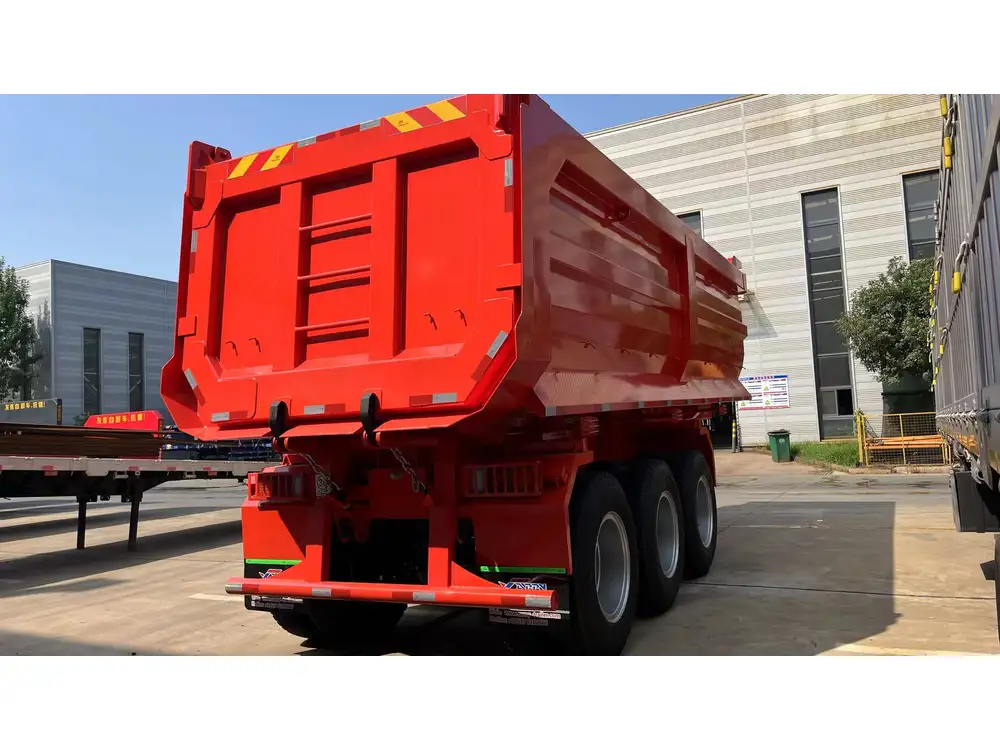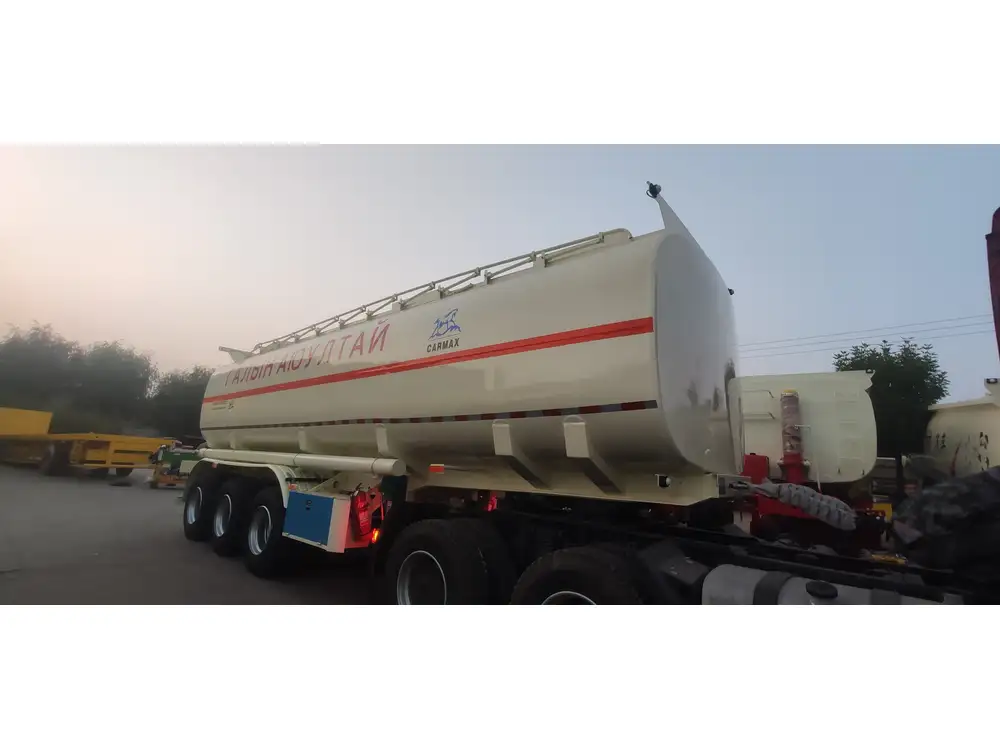Introduction to Tipper Trailers
Tipper trailers stand as a significant innovation within the transport industry, designed specifically to ease the loading and unloading of materials. Their ability to tilt and dispose of cargo with minimal effort streamlines operations across various sectors, including construction, mining, and agriculture. Understanding how to use a tipper trailer effectively can not only enhance operational efficiency but also prolong the lifespan of the equipment.
Types of Tipper Trailers
A successful usage of tipper trailers begins with an understanding of the different types available. Here’s a quick overview:
| Type | Description | Ideal Use |
|---|---|---|
| Single Axle | Typically lightweight, designed for carrying less bulk and weight. | Small-scale operations. |
| Twin Axle | Offers increased stability and can carry more weight than single axles. | Medium-sized loads; general use. |
| Tri Axle | Accommodates heavier loads with enhanced stability and durability. | Heavy construction materials. |
| Side Tipper | Features dual tipping capability, allowing for unloading from either side. | Versatile loading and unloading. |
| Drop Side Tipper | Allows side drops while maintaining the tipping function. | Bulk materials requiring side access. |

Essential Features of Tipper Trailers
When selecting a tipper trailer, several features merit consideration. Key functionalities may dramatically affect user experience and performance:
- Chassis Construction: A robust chassis ensures durability under heavy load conditions. Most are constructed from high-strength steel or aluminum to withstand rigorous use.
- Tipping Mechanism: Different trailers employ various tipping mechanisms; hydraulic systems are the most common, offering both efficiency and safety.
- Capacity: It’s crucial to know the weight and volume specifications of your tipper to avoid overloading, which can lead to accidents or equipment failure.
- Braking System: Electronic or hydraulic brakes ensure effective stopping power, particularly essential when transporting heavy loads on steep slopes.
Step-by-Step Guide to Using a Tipper Trailer
1. Preparing for Loading
Before loading materials, perform a thorough safety check:
- Inspect the Trailer: Look for any visible damage, wear and tear, or loose components.
- Check the Brakes: Ensure that they engage properly and are free of obstructions.
- Wheels and Tires: Inspect for proper inflation and tread wear to avoid blowouts during transit.

2. Proper Loading Techniques
Maximize the efficiency of your trailer through careful loading:
- Distribute Weight Evenly: Load materials evenly across the trailer to maintain stability and prevent tipping during transport.
- Avoid Overloading: Adhere strictly to the manufacturer’s weight limits to avoid structural damage or accidents.
- Secure the Load: Using tie-down straps or netting can prevent materials from shifting during transit.
3. Towing the Tipper Trailer
Selecting the right vehicle to tow your tipper trailer is critical:
- Check Compatibility: Ensure the towing vehicle meets the gross vehicle weight ratings prescribed by the trailer manufacturer.
- Connections: Double-check that the hitch, safety chains, and electrical connections are secure before setting off.
4. Operative Raising Mechanism
Activating the tipper mechanism requires a correct approach:
- Identify the Control System: Most tipper trailers feature hydraulic controls; familiarize yourself with these controls, whether manual or electric.
- Gradual Raises: Start by raising the trailer slowly. Watch the load carefully to prevent momentum-induced tipping.

5. Unloading the Materials
Proper unloading techniques are crucial to avoid accidents:
- Choose the Right Location: Unload materials in a designated area free of obstructions and hazards.
- Wear Safety Gear: Always ensure you’re wearing suitable personal protective equipment (PPE) like hard hats and gloves while unloading materials.
- Watch the Trailer Angle: Extending the tipping angle too high can cause instability. Unload slowly and monitor the tipping process.
6. Post-Operation Care
Conduct post-use maintenance to prolong the life of your trailer:
- Clean the Trailer: Remove any residual material that may compromise performance.
- Inspect for Damage: Report and repair any identified issues immediately.
- Secure Storage: Store the trailer in a safe, dry location to protect it from the elements.
Frequently Asked Questions (FAQs)
Here are some common queries regarding tipper trailer usage:

How often should I service my tipper trailer?
Regular maintenance checks are advisable at intervals of every 5,000 miles or minimum once a year; however, increased usage may necessitate more frequent inspections.
What types of materials can be transported in a tipper trailer?
Tipper trailers are versatile and can carry various materials ranging from loose aggregates like sand and gravel to construction debris and agricultural produce. However, check specific regulations regarding hazardous materials.
Is it safe to use a tipper trailer on slopes?
While using a tipper trailer on slopes is safe, caution is required. Ensure the load is low and the trailer is not overloaded. Always unload downhill if the gradient is steep.

Differences Between Tipper Trailers and Regular Trailers
It’s advantageous to understand the distinctions between tipper trailers and non-tipping counterparts:
| Aspect | Tipper Trailer | Regular Trailer |
|---|---|---|
| Loading Method | Hydraulic tilting for efficient unloading | Manual unloading required, usually not as efficient |
| Versatility | Often used for a broader range of materials | Limited to certain materials |
| Operational Complexity | Requires more training to operate hydraulic systems | Easier for operators with basic towing knowledge |
Choosing the Right Tipper Trailer for Your Needs
Choosing the right tipper trailer can significantly enhance operational capabilities. Key considerations include:
- Load Type: Assess what type of materials you will be transporting.
- Capacity Requirements: Identify how much weight and volume you need your trailer to accommodate.
- Terrain Conditions: Select trailers suited for your work environment, whether on highways or rugged terrains.
Challenges and Solutions When Using Tipper Trailers

Common Challenges
Overloading: Exceeding weight limits can lead to structural failures or accidents.
- Solution: Always confirm the trailer’s load capacity and implement a weight management system.
Stability Issues: Unstable loads can result in tipping during transit.
- Solution: Ensure an even distribution of weight and secure loads tightly.
Hydraulic Failures: These can occur for several reasons including leaks or pump failures.
- Solution: Routine inspection and timely maintenance of hydraulic components are key.
Final Thoughts
Understanding how to use a tipper trailer not only enhances efficiency but also ensures safety and longevity of the equipment. By following best practices in loading, towing, and unloading, operators can avoid common pitfalls and enjoy the benefits of seamless material transport. Whether you are involved in construction, agriculture, or another industry, leveraging tipper trailers skillfully will undoubtedly boost your operational capabilities.



